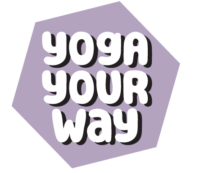My teacher, Gary Kraftsow, likes to ask this question: what’s stronger, your intentions or your habits? For all of us making a New Year’s resolution to break a bad habit (the same one? Yet again???), the answer’s clear: habits are ingrained, and unconscious, so they’re hard to break, whereas intentions float in and out of our conscious minds, getting lost in the shuffle with all the other stuff fighting for our attention.
I’m no expert at breaking my own habits. As an example, I was reading this passage from “True Refuge,” a book about meditation, by Tara Brach: “Imagine you just realized you’d been on Facebook for three hours and have finished off a pound of trail mix in the process.” Guess what I was doing at that moment? If you guessed finishing off a pound of trail mix, you guessed right. My hand just passed back and forth between the bag and my mouth, bypassing my brain entirely.
But the philosophy and practice of yoga does offer some insights into the process, and it has helped me, so I’d like to share some of these ideas with you.
- To really get at a habit, it helps to bring it into conscious awareness. You can do this by cultivating mindfulness. Bring your attention inwards – noticing all the sensations in your body. If you’re in the middle of exercising a habit, say, eating trail mix, notice the movement of your hand to the bag and then to your mouth. Notice how your stomach feels. Ask yourself – do I really want or need that next mouthful? See if you can become aware of a habitual movement BEFORE it starts – and talk yourself out of completing that action. You may have to do this many times before it sticks.
- It can be especially hard to give up a habit not just because it’s unconscious but because not having that habit to rely on leaves a void. So think of it not as taking something away, but rather replacing it with something else. For example,you might replace the hand to mouth motion involved in eating junk food, and in smoking, with a yogic alternate nostril breathing technique. Or consider adding your own personal yoga practice to your daily routine. I can help you develop a personalized breathing and movement practice, if you are interested.
- Willpower is like a muscle – it becomes weak with disuse. And it takes practice to cultivate willpower. So you might try to give up something easy first – something that you like and do often but doesn’t exert as strong a force on you as does a bad habit that you want to break. Perhaps there’s a food that isn’t especially healthy that you like but that you think you could give up – at least for a time – without too much difficulty. Once you’ve done that, the next step – giving up something you’re really attached to – could be easier.
- Educate yourself on the reasons you should give up your bad habit. The more ammunition you have, the stronger your willpower will be. When I was a teenager, it was widely believed that chocolate was implicated in acne breakouts.That theory has since been largely debunked, but at that time it was thought to be true. I was (and still am) a chocoholic, but here was a clear example of my intention being stronger than my habit – my intention to have clear skin became stronger than my cherished chocolate habit, It took some doing, but I didn’t touch chocolate for about 8 years. (sigh – all that olate!!!)
I’d like to offer an exercise in cultivating mindfulness, which may help in breaking those pesky habits. If you take my classes, you’ll recognize this as something I often do at the end of a class.
Sit on a chair, feet on the floor, spine erect (don’t lean against the back of the chair), hands resting in your lap.Bring your attention to the center of your chest, noticing the rib cage expanding and contracting as you breathe.Make your breaths as long as is comfortable while still keeping your breath smooth and even. Take several long breaths, noticing the natural movement of your body as you breathe.
Now focus on your feet. Notice the sensations in your feet – feel the soles of your feet on the floor – the texture of your shoes or socks. Notice any pressure points. Notice the temperature of your feet. Perhaps the tops are cooler than the bottoms. Perhaps your feet are cooler than the rest of your body. Notice other sensations – pulling, tingling, itching, throbbing, tension, tightness. See if you can let those sensations go and allow your feet to relax.
Repeat this all the way up through your body – ankles, lower legs, knees, thighs, hips, buttocks, then up the spine from the sacrum to the top of the back, up the front of your torso from the pubic bone to the collar bone, then move to the, hands, wrists, forearms, elbows, upper arms, shoulders. Then the back of the neck, the top of the head, the muscles around your eyes, your face, your jaw, your throat.
Bring your attention back to the center of your chest, focusing again on the breath, but also on all the sensations in your body. Stay here for a few minutes, immersed in awareness of your body and breath.
Wishing you a peaceful, joyous, and successful New Year!
